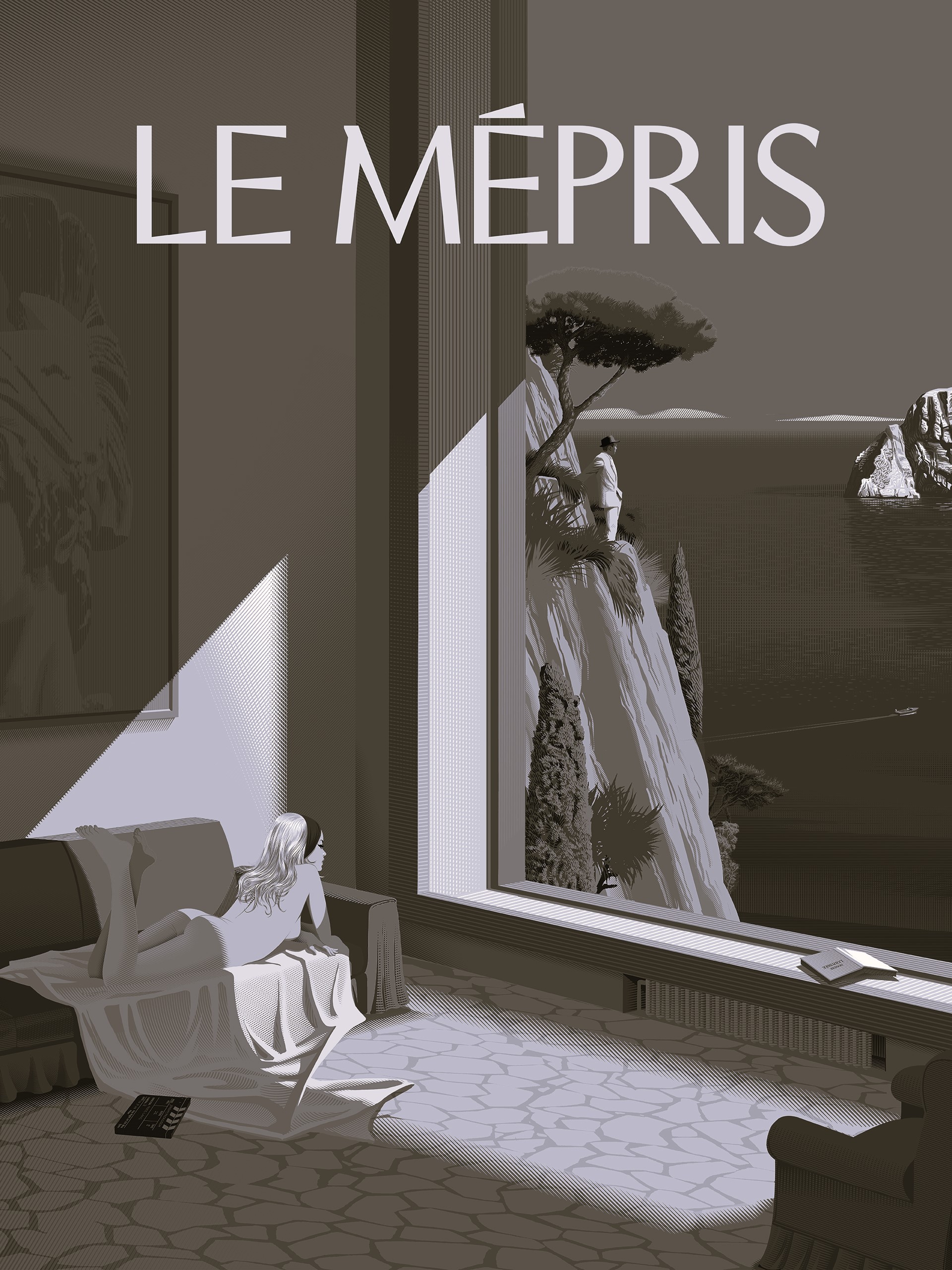



En 1936, el periodista y dramaturgo italiano Curzio Malaparte, recientemente liberado de un exilio, decidió construir una casa sobre Capo Masullo, un promiente acantilado en la isla de Capri. Encomendó este proyecto al arquitecto Adalberto Libera de esta manera: “¡Hazme una casa como yo!” Malaparte rechaza el esquema inicial de Libera por considerarlo racionalista y lineal; comparándolo con un bunker o una prisión, además de lejano al espíritu mediterráneo. Finalmente, el arquitecto y el escritor discuten al comenzar la obra, y es el mismo Malaparte quien con la ayuda de albañiles locales dirige y culmina el proyecto. Libera sólo firmo los planos.
El acceso a la casa exige atravesar la isla y está lejos de cualquier vía de comunicación terrestre. El trayecto representa una hora y media de marcha desde la Piazzetta de Capri, en la cumbre del funicular de Marina Grande. La Casa Malaparte es igualmente accesible desde el mar, únicamente con calma, ya que las rocas afloran y hacen el acceso muy peligroso. Una escalera de 99 peldaños tallada en el acantilado conduce a nivel de la casa.
Demasiado voluminoso para salir del edificio, la mayor parte del mobiliario original permanece todavía en la casa. La bañera de mármol del dormitorio principal del escritor está siempre lista. Su dormitorio y su biblioteca están igualmente intactos.
Casa Malaparte, con sus líneas severas, parece desafiar solitariamente la belleza salvaje del lugar. Se trata de una localización melancólica y disruptiva, que inmediatamente llamó la atención del mundo cinematográfico. Así, en Le Mèpris (El desprecio ), película de culto de Jean Luc Godard, la memorable escena en la que Brigitte Bardot toma el sol desnuda en el tejado está ambientada en plena villa, entre sus matices del inconfundible rojo pompeyano. A Liliana Cavani, en cambio, sus herederos le permitieron rodar la película basada en la novela de Malaparte, La pelle. Pero las excepciones son verdaderamente raras: la villa hoy en día siempre permanece inaccesible -salvo casos excepcionales- y no está abierta al público.
“Hoy vivo en una isla, en una casa triste, dura, severa, que me construí, solitaria, sobre una roca escarpada sobre el mar: una casa que es el espectro, la imagen secreta de la prisión. La imagen de mi nostalgia. Quizás nunca deseé, ni siquiera entonces, escapar de la cárcel. El hombre no está destinado a vivir libremente en libertad, sino a ser libre dentro de una prisión”.
In 1936, recently released from exile, Italian journalist and playwright Curzio Malaparte decided to build a house on Capo Masullo, a prominent cliff on the island of Capri. He entrusted this project to architect Adalberto Libera in this way: “Make me a house like me!” Malaparte rejects Libera’s initial scheme as rationalist and linear; comparing it to a bunker or a prison, as well as being far from the Mediterranean spirit. Finally, the architect and the writer argue at the beginning of the work, and it is Malaparte himself who, with the help of local bricklayers, directs and completes the project. Libera only puts his signature on the plans.
Access to the house requires crossing the island and is far from any land communication route. The journey represents an hour and a half of walking from Piazzetta di Capri, at the top of the Marina Grande funicular. The Malaparte House is also accessible from the sea, only calmly, since the rocks outcrop and make access very dangerous. A staircase of 99 steps carved into the cliff leads to the level of the house.
Too bulky to leave the building, most of the original furniture still remains in the house. The marble bathtub in the writer’s master bedroom is always ready. His bedroom and library are equally intact.
Casa Malaparte, with its severe lines, seems to solitarily challenge the wild beauty of the place. It is a melancholic and disruptive location, which immediately caught the attention of the film world. Thus, in Le Mèpris (Contempt), a cult film by Jean Luc Godard, the memorable scene in which Brigitte Bardot sunbathes naked on the roof is set in the middle of the villa, among its shades of unmistakable Pompeian red. Filmmaker Liliana Cavani, on the other hand, was allowed by her heirs to film the film based on Malaparte’s novel, La pelle. But exceptions are truly rare: the villa today always remains inaccessible – except in exceptional cases – and is not open to the public.
“Today I live on an island, in a house that is sad, hard, severe, that I built for myself, solitary on a sheer rock over the sea: a house that is the spectre, the secret image of prison. The image of my nostalgia. Maybe I never desired, not even then, to escape from jail. Man is not meant to live freely in freedom, but to be free inside a prison.”
E-10 km 12
Sant Joan de Labritja
Ibiza 07810
Contacto
info@diegomontero.com
+598 95002 765
Costanera a la Barra s/n
El Tesoro
Maldonado 20001
